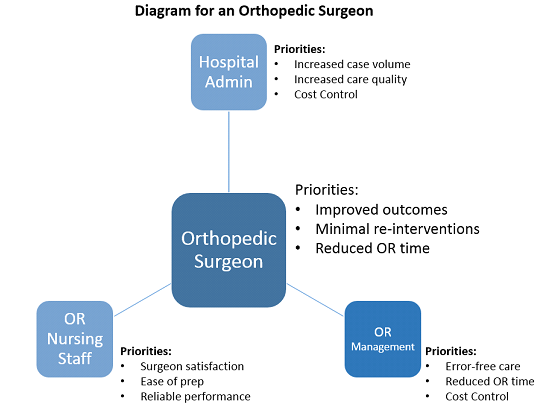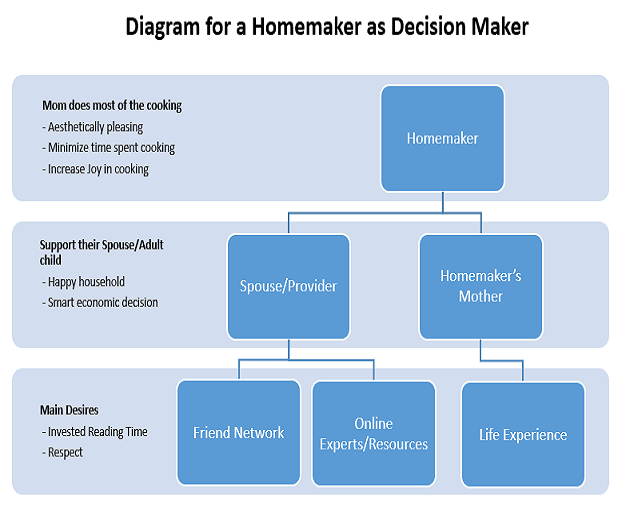Considering Only Your Customer Just Isn’t Enough
Your audience has many decision makers. Successful marketing considers them all.
 Let’s start out by saying that in the sale of many products, particularly consumer products, there is only one meaningful decision maker necessary to persuade- the person who pays for them. However, usually, there is more than one decision maker that influences final purchase, and so requires marketing attention.
Let’s start out by saying that in the sale of many products, particularly consumer products, there is only one meaningful decision maker necessary to persuade- the person who pays for them. However, usually, there is more than one decision maker that influences final purchase, and so requires marketing attention.
In B2B settings, you are more likely to be faced with several actors, all with varying degrees of influence. It is common for effective sales processes to take the different individuals into account, when the product offering is able to support a higher cost of sales or when selling through channels, such as retail or manufacturer’s representatives.
Failure to tailor messaging to target audience support teams is common
When reviewing many marketing efforts, it becomes clear that the primary emphasis of the messaging is directed to the evident decision makers, usually the buyers of a product, and little or no consideration is given to their “support teams.”
Support teams are any individuals, silent or vocal, who support the success of the main decision maker.
For example, business product environment users (software, IT hardware, other hard business assets), or administrative or tactical personnel in a medical or professional environment (medical devices or products, diagnostic instruments and such). Also crucial are domestic team members–a spouse supporting a homemaker with an appliance or home improvement purchase.
In every situation, it is critical to understand the motivations of the many individuals who take part in the selection and use of products or services; they are invested in these decisions.
The path to targeting personas–primary market research is a critical component
The understanding of personas is vital to effective marketing. Personas offer the opportunity to create detailed base profiles of decision makers and their support teams by understanding their unique levels of influence and needs in purchasing and using your products or services. While personas are nothing new to many marketing teams, the development of rich personas, those which take into account more than surface demographics and/or firmographics (in the case of B2B), offers significantly more opportunity to produce effective message differentiation.
Primary market research is a critical tool for developing insight-filled personas that go far beyond the basics. Through this direct approach to the individuals who affect decisions, essential attributes are uncovered and may be targeted, such as complex attitudes, basic role-based and unstated personal goals and fears, which figure highly in consumer behaviors.
While secondary research reports can be somewhat helpful with basic persona development through providing demographics and firmographics, they seldom move beyond the most superficial description of needs into the creation of more sophisticated profiles. Yet, the most differentiated marketing messages are made available through the use of these more sophisticated profiles.
To help your team understand the process of accessing consumer insights, read our previous articles on aligning your messages to their true meaning for your audience and ensure success in positioning your products in the consumer marketplace.
Read the article Messaging and Positioning Marketing Research Hinges on Finding Meaning
1. Start with a diagram
Begin by naming and connecting your decision makers to their support team members. Identifying the nuance of inter-connectivity is critical to comprehending relationships, influence, and thus establishing successful focus.
In a clinical setting, we may find a diagram such as the following:

For a consumer application, it may look something like this:

2. Establish additional persona dimensions based on hypotheses
Once you have drawn diagrams and established priorities, you are ready to begin to list hypotheses concerning the dimensions to further explore. This may include the following in addition to the basic demographics or firmographics (or practice metrics in clinical situations).
- Attitudes concerning role priorities
- Attitudes concerning technical capabilities
- Meaning of your solution personally*
- Team priorities
*for more detail regarding finding meaning, we again recommend reading our previous post on the subject:
Read the article Messaging and Positioning Marketing Research Hinges on Finding Meaning
3. Put it all together
Once you have created your categories and hypotheses, a market research exercise can be crafted to enable a clearer understanding of these dimensions using either (or both) qualitative or quantitative methods. The data and insights collected can be integrated into your personas.
Actionable Research specializes in gathering deeper insights into our clients’ audiences and understands the difference between decision makers and their support teams in B2B, B2C, professional and clinical settings.


